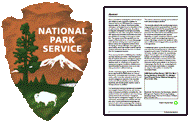United States National Park Service

United States National Park Service: Publications
Technical Brief 19: Archeological Collections and the Public: Using Resources for the Public Benefit
Date of this Version
2-2006
Citation
U.S. Department of Interior, Archeological Assistance Program Technical Brief No. 19, February 2006.
Abstract
Introduction
Archeological collections are rich resources for building outreach programs that engage the public, in exploring the depth and diversity of the past. The collections provide building blocks for acquiring skills and knowledge that are useful in modern life by investigating the material evidence of past peoples and learning lessons from their experiences. In these ways, archeological collections open avenues of inquiry for new approaches to old problems and enable professionals to assess the relevance of curatorial practice in contemporary society.
Outreach programs have a wealth of material available to them as a result of archeology, perhaps even more than some curators realize. Beyond artifacts, archeological collections can include many other kinds of materials, such as soil samples, photographs, maps, research and excavation reports, project notes, oral histories, ethnographic records, and other information pertinent to an excavation. They tend to be managed by federal and state agencies, tribes, and local constituencies in many kinds of repositories, including libraries, historical societies, parks, museums, colleges and universities, and even private collections. Note, however, that many other places care for archeological materials, including tribal heritage centers and cultural resource management companies. Members of the curatorial staff within the repositories, however, are not necessarily archeologists and may demonstrate a lack of understanding about archeology. This lack of familiarity impedes their ability to explore the full potential of archeological collections for outreach and education.
Archeologists and non-archeologists alike must seek creative applications for the collections they curate. Outreach provides an outlet to educate the public and encourage questions about the past and present. Whether well-versed or new to archeology, museum professionals should understand that responsible curation involves making the resources of archeological collections available as a means for everyone to learn about the past.
Finding a Purpose for Curation
Audiences for Collections
Case Studies
Nevada State Museum, Carson City, Nevada
Maryland Archaeological Conservation Laboratory at Jefferson Patterson Park and Museum, St. Leonard, Maryland
Alutiiq Museum and Archaeological Repository, Kodiak, Alaska
Archaeology Collection, Bryn Mawr College, Bryn Mawr, Pennsylvania
Midwest Archeological Center, National Park Service
Conclusion
Bibliography
Special thanks to

